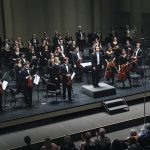Report explores link between state property tax limits and municipal spending
Finds spending patterns vary based on new construction growth
State-imposed limits that tie municipal property tax increases to new construction are affecting local government spending overall as well as in specific areas such transportation and development, according to a new analysis by the Wisconsin Policy Forum.
Under the current limits, municipalities generally may only increase their total property tax collections, or levies, by the rate of new construction each year. The report notes that state aids, the other main source of municipal revenues, have been flat or declined in recent years.
WPF researchers found that high-growth communities have been able to raise property tax levies and total spending more than slower-growing communities. The report also found significant differences between these communities in the types of services that experienced spending growth. Combined, these findings suggest an unintended consequence of linking levy limits to new construction in which only high-growth communities have the financial capacity to invest in services that help precipitate further growth, while low-growth communities are locked into that status.
Since 2006, the state has limited how much cities and villages may increase property tax collections, or levies. Initially, the state set a minimum percentage levy increase, or “floor,” as well as a “ceiling” limiting growth in general to the percentage increase in property values due to new construction. But in 2011, the law was changed, setting the “floor” at zero but keeping the “ceiling” the same. Consequently, municipalities’ ability to increase their property tax levies from year to year is tied almost exclusively to their percentage growth in new construction, though exceptions do exist for debt service and a few other circumstances.
Policy Forum researchers separated the state’s cities and villages into four categories according to new construction growth. From 2011-2016, cities and villages with the highest growth – over 1.5% net new construction annually – increased property tax levies by a median of 17.9%, while the slowest-growth municipalities increased levies by just 3.2%. The report found that total municipal spending patterns mirrored levy growth, with the highest-growth municipalities spending a median 18.3% more, while the lowest-growth communities spent 3.9% more.
Although levy increases and total spending patterns mirrored total new construction growth, spending priorities differed by the rate of development. For example, while all municipalities increased spending on public safety, transportation spending varied depending on new construction growth, with the highest increases in communities with medium-low and high development.
Significantly, the report shows spending on economic development increased substantially more in high-growth municipalities compared to lower-growth areas. Low-growth communities decreased development spending by a median of 3.1% while spending in high-growth areas doubled.
Levy limits appear not to have constrained communities of any growth rate from maintaining spending on core services, such as public safety. But, the report cautions, a lack of new construction, and the additional property tax revenues that come with it, may be making it difficult for low-growth municipalities to spend more on programs to attract development. Conversely, high-growth municipalities have been able to increase levies, and spending, due to that growth. The analysis does not prove that levy limits are hampering economic development in some communities, but cautions that as these trends continue, they may contribute to a growing gap between high- and low-growth municipalities.
The WPF analysis, “A Growing Divide,” is available now by visiting www.wistax.org.
The Wisconsin Policy Forum was created on January 1, 2018 by the merger of the Madison-based Wisconsin Taxpayers Alliance and the Milwaukee-based Public Policy Forum. With offices in Madison and Milwaukee, WPF is committed to their legacy of independent, nonpartisan research and analysis.
NOTE: This press release was submitted to Urban Milwaukee and was not written by an Urban Milwaukee writer. While it is believed to be reliable, Urban Milwaukee does not guarantee its accuracy or completeness.
Mentioned in This Press Release
Recent Press Releases by Wisconsin Policy Forum
Metro Milwaukee’s Startup Investment Increases; Longtime Weaknesses Persist
Nov 20th, 2025 by Wisconsin Policy ForumDataTool offers comparisons to peer metros on indicators of innovation, entrepreneurship
Post-Pandemic, A Partial Turnaround for Educator Turnover in Wisconsin
Oct 3rd, 2025 by Wisconsin Policy ForumTurnover rates down statewide but remain elevated; Impact is greater for some communities





















